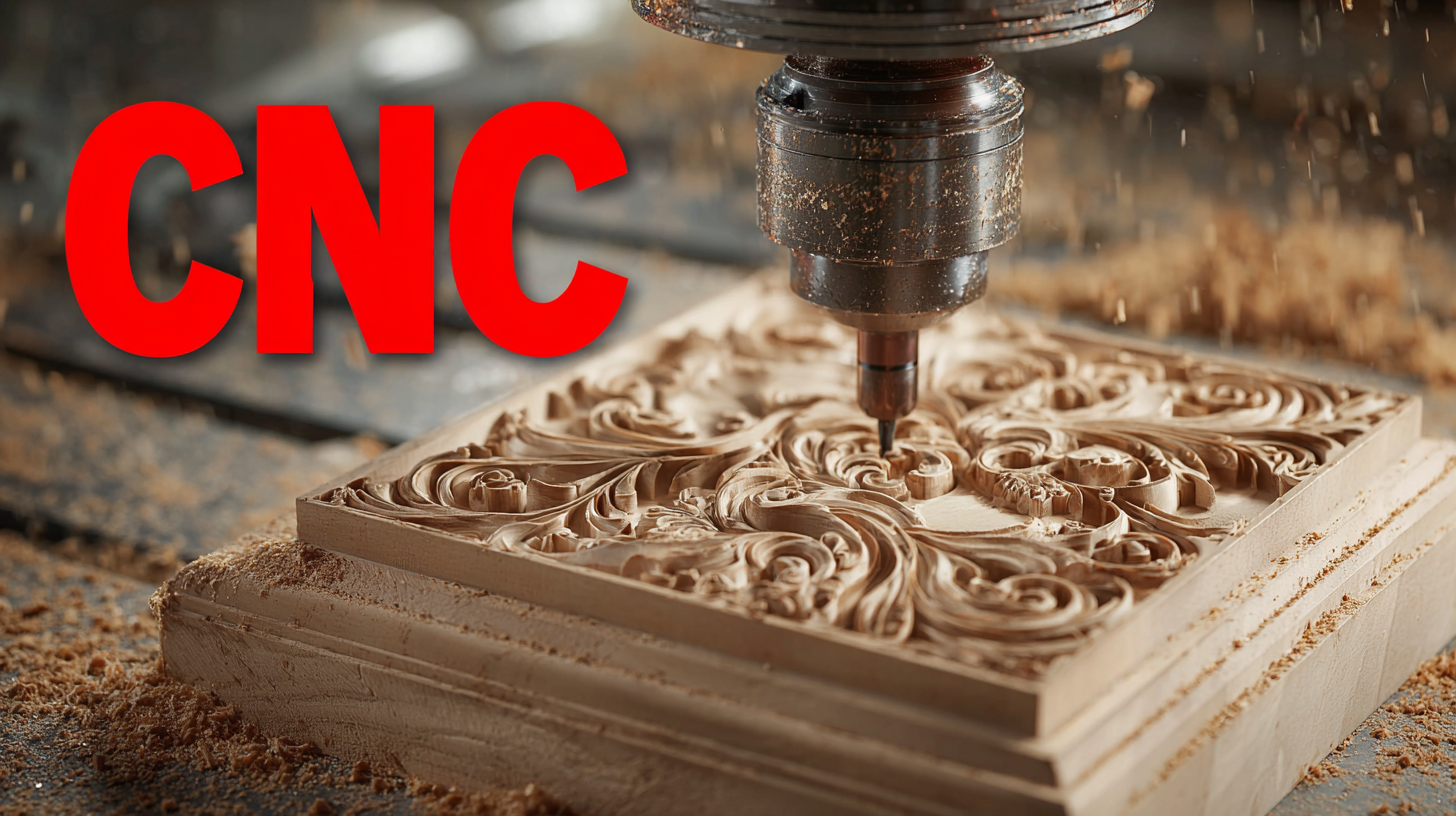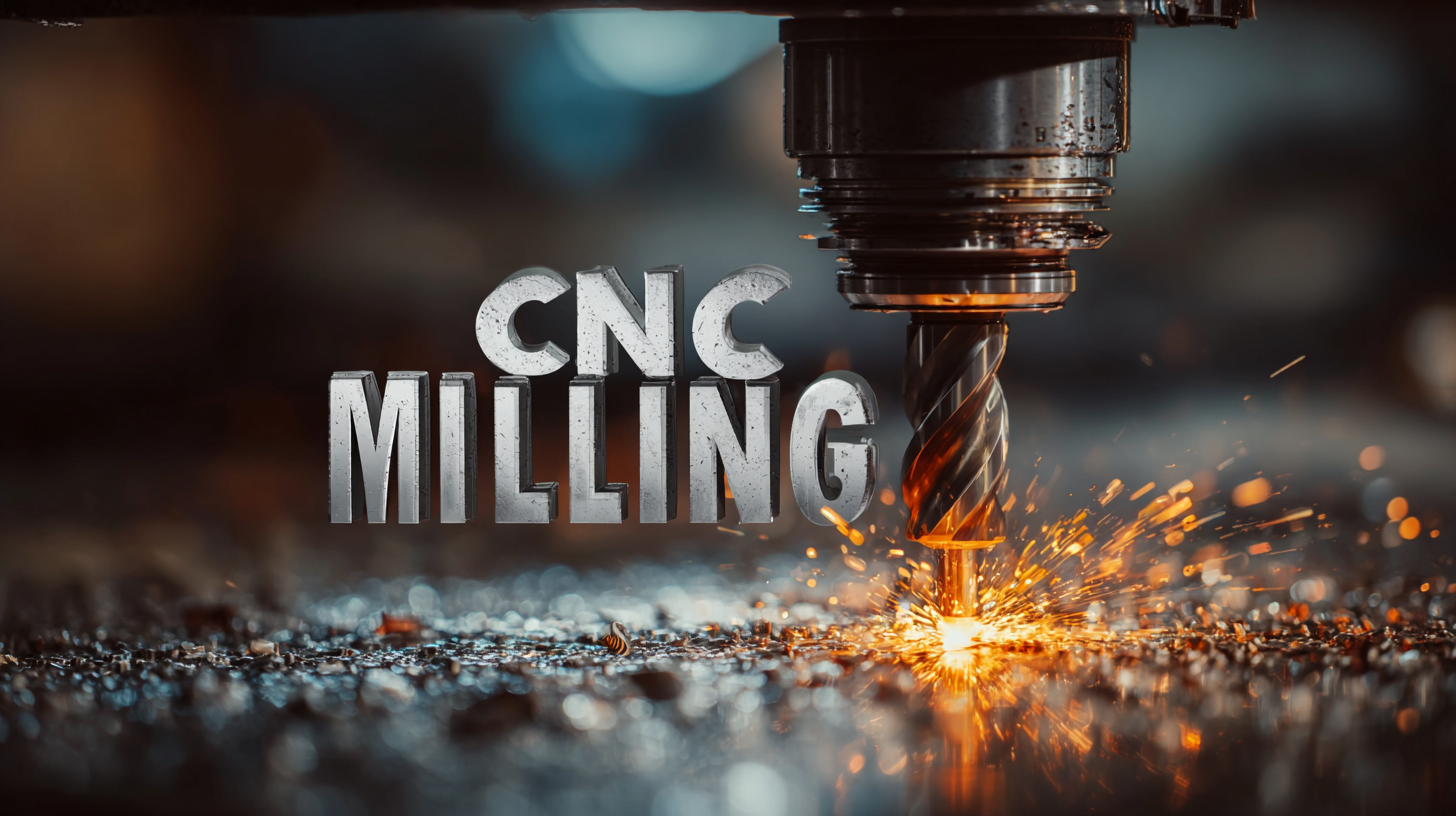7 Innovative Best CNC Milling Techniques You Should Know About Today
In the rapidly evolving world of manufacturing, CNC milling has emerged as a cornerstone technology, revolutionizing the way we approach precision engineering and production. This advanced machining process utilizes computer numerical control to automate and optimize the milling of various materials, ensuring high accuracy and efficiency. As industries across the globe strive for innovation and competitiveness, understanding the best practices and techniques in CNC milling becomes essential. In this blog, we will explore seven innovative CNC milling techniques that you should be aware of today. These insights will not only enhance your operational capabilities but also empower you to leverage the full potential of CNC milling in your projects, ultimately leading to better products and expanded opportunities in the market.

Revolutionizing Precision: An Overview of CNC Milling Techniques Today
In the realm of modern manufacturing, CNC milling stands as a cornerstone of precision engineering. Today, several innovative techniques are reshaping the landscape of this field, enhancing productivity and accuracy. One such method is the use of adaptive machining, which allows CNC machines to automatically compensate for variations in tool wear and machine dynamics. This leads to consistent results and diminishes the chances of errors, ultimately saving time and resources.

Additionally, the integration of advanced software solutions such as CAD and CAM systems have revolutionized the planning and execution stages of CNC milling. These tools not only allow for intricate designs to be easily translated into milling instructions but also facilitate real-time monitoring and adjustments during the milling process. With features like simulation and tool path optimization, manufacturers can achieve higher efficiency and superior quality in their output. The synergy of technology and engineering in CNC milling today is paving the way for unprecedented levels of precision and innovation.
The Role of Automation in Enhancing CNC Milling Efficiency
Automation plays a pivotal role in enhancing the efficiency of CNC milling operations. By integrating advanced technologies such as robotics and machine learning, manufacturers can streamline their processes, reducing cycle times and minimizing human error. Automated systems can make real-time adjustments, ensuring that the milling machines operate at optimal settings based on the materials and desired specifications. This not only boosts productivity but also enables higher precision in the final products.
Furthermore, the implementation of automation in CNC milling facilitates better resource management. Automated tools can monitor machine performance, predict maintenance needs, and reduce downtime by scheduling repairs before issues arise. This proactive approach ensures that production flows smoothly and that machines operate at peak performance levels. Additionally, with automation, businesses can leverage data analytics to optimize their milling techniques continuously, adapting to changing market demands and enhancing overall operational efficiency.
7 Innovative Best CNC Milling Techniques You Should Know About Today - The Role of Automation in Enhancing CNC Milling Efficiency
| Technique | Description | Benefits | Automation Role |
|---|---|---|---|
| High-Speed Milling | Utilizes higher spindle speeds to increase material removal rates. | Reduces cycle time and improves part finish quality. | Automation allows for real-time adjustments to spindle speeds based on material. |
| 5-Axis Milling | Allows for machining complex geometries in a single setup. | Increases accuracy and reduces handling time. | Automated programming enhances machining path optimization. |
| Tapered End Mills | Used for creating sloped or angled surfaces. | Useful for mold and die applications reducing secondary operations. | Automation can streamline the tool change process for efficiency. |
| Adaptive Machining | Adjusts machining parameters based on real-time feedback. | Enhances tool life and reduces waste. | Automation systems collect data for continuous process improvement. |
| Coolant Through Tool | Delivers coolant directly through the cutting tool. | Improves chip removal and extends tool life. | Automated systems ensure optimal coolant flow rates. |
| Micro Milling | Machining very small features with high precision. | Ideal for electronics and biomedical components. | Advanced automation aids in precise movement control. |
| CNC Simulation Software | Simulates machining operations before actual cutting. | Reduces the risk of errors and material waste. | Automation allows for predictive maintenance schedules based on simulations. |
Exploring Advanced Materials for Superior CNC Milling Applications
The world of CNC milling has witnessed significant advancements, largely fueled by the exploration of advanced materials. Traditional materials like aluminum and steel have long been staples in machining processes, but new high-performance materials are transforming the landscape. For instance, a recent report by MarketsandMarkets indicates that the global market for advanced materials in manufacturing is projected to reach USD 104.55 billion by 2026, growing at a CAGR of 8.2%. This surge emphasizes the need for CNC milling techniques that can accommodate and optimize these innovative materials.

Materials such as titanium alloys, composite materials, and ceramics are gaining traction due to their superior mechanical properties and lightweight characteristics. Titanium, known for its high strength-to-weight ratio, is increasingly being utilized in aerospace and medical applications. According to a study by Grand View Research, the titanium market is expected to expand at a CAGR of 6.7% from 2021 to 2028, highlighting the growing importance of sophisticated CNC milling techniques. These advanced methodologies not only enhance tool life and accuracy but also improve the efficiency of machining processes, ultimately leading to superior product performance and reliability in various industrial sectors.
Cutting-Edge Software Solutions Transforming CNC Milling Processes
The CNC milling industry is experiencing a remarkable transformation with the advent of cutting-edge software solutions that enhance efficiency and precision. CAD software stands at the forefront of this evolution, providing engineers and designers with robust tools to create intricate 3D models and detailed representations. These advanced design capabilities significantly streamline the engineering process, resulting in more accurate manufacturing outcomes and reduced lead times.
Furthermore, innovations such as virtual machine tools combined with wearable vibration devices offer CNC operators a groundbreaking way to perceive cutting forces in real-time. This technology not only enhances the operator's tactile and visual awareness but also contributes to improved safety and operational efficiency. As the industry embraces next-generation CNC machining, the role of artificial intelligence becomes ever more prominent, with AI-driven solutions poised to redefine traditional manufacturing paradigms. Reports indicate that integrating these technologies can lead to productivity improvements of up to 30%, showcasing the significant potential for growth and innovation within the CNC milling sector.
Sustainability Practices in Modern CNC Milling Operations
In today's manufacturing landscape, sustainability has become a paramount concern, especially within CNC milling operations. As environmental regulations tighten globally, industries are looking for ways to minimize carbon emissions and enhance the sustainability of their practices. This shift is pushing manufacturers to adopt innovative techniques that not only reduce waste but also optimize energy consumption. Recent advancements in sensor technologies, for instance, play a critical role in monitoring tool conditions during machining processes, ensuring that resources are used efficiently and effectively.
Moreover, the integration of sustainable practices in CNC milling is revolutionizing the approach to materials processing. Techniques such as multi-objective multi-pass turning are being developed to optimize cutting conditions, particularly for challenging materials like precipitation-hardened stainless steel. These methods not only improve production efficiency but also adhere to the principles of sustainable manufacturing by reducing energy use and waste output. As the industry continues to embrace these innovations, the potential for a circular economy in CNC operations becomes increasingly attainable, paving the way for a more environmentally responsible future in manufacturing.
7 Innovative Best CNC Milling Techniques
This chart illustrates the innovation levels associated with various CNC milling techniques currently being adopted in the industry. Higher percentages indicate more advanced and effective techniques.
 English
English  Česká republika
Česká republika Deutsch
Deutsch Dutch
Dutch Polska
Polska

